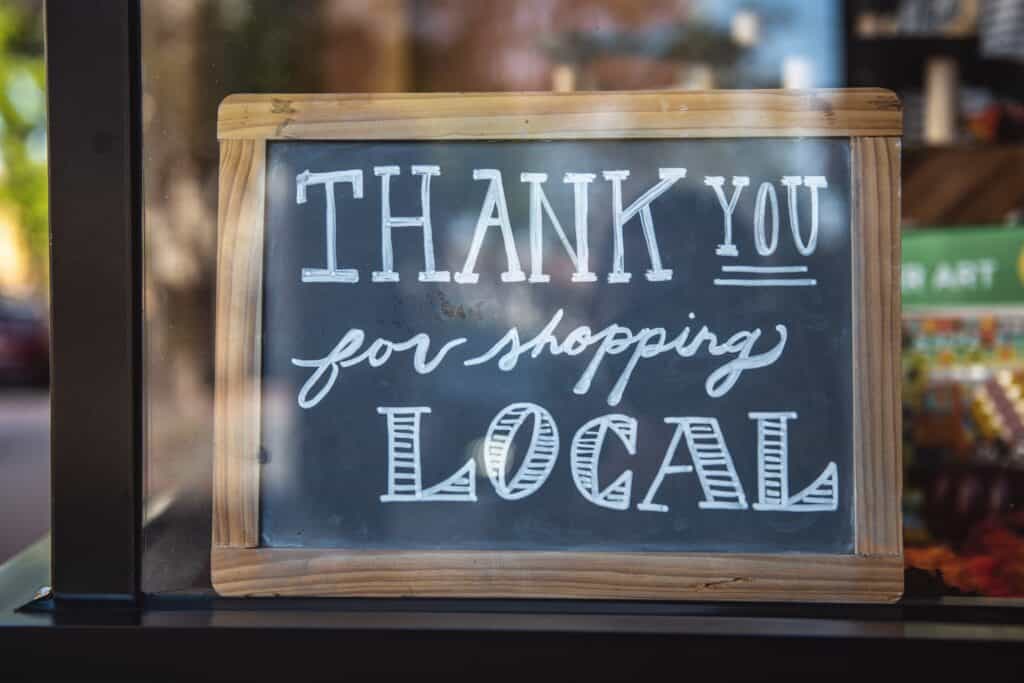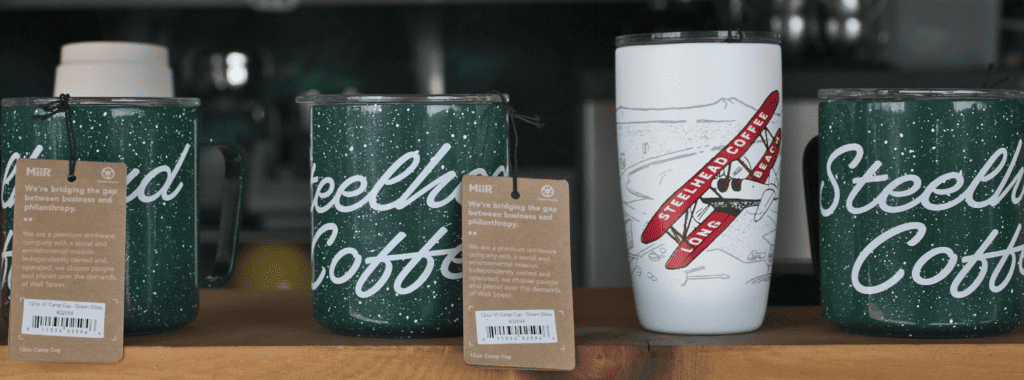With the increase in digital penetration and significant shift of mindshare of customers from physical to a digital environment, small businesses have also moved a lot of their budgets for marketing to the online arena.
What I have learnt from speaking to small business owners over the last several years is that the conversations on marketing in 2011 were very different and in 2023 its all about social media and paid ads on google.
That said, a small percentage of small business still continue to invest some of their marketing budgets on offline or traditional advertising strategies and stand to gain from it. Offline advertising may sometime seem much less crowded for small businesses when compared to the online or digital advertising space.
I thought of penning this article to educate newer business owners and those who are starting up on some of the practices of offline marketing that are still very relevant today and are practised by the older generation of business owners.
Fundamentals of offline marketing strategy for a small business to acquire more customers and drive growth

There are some basic and evergreen principles that remain true no matter what kind of marketing channel a small business uses to build and promote their brand. Some of the most important aspects of offline marketing are highlighted below.
- Understand Your Audience is the basic building block of a marketing strategy: As a small business, the first principle is to know who your customers are, what they need, and what motivates their purchasing decisions. Tailor your marketing messages to resonate with your target audience.
- Attempt to build a brand: Develop a clear and compelling brand identity. Think of your small business brand as a feeling you want to evoke in your potential customers whenever they come in contact with your business name.
- Engagement and Experience as opportunities for doing good: Focus on creating engaging and memorable experiences for your customers. Whether it’s through events, direct mail, or in-person interactions, make sure each touchpoint is an opportunity to impress and delight your audience to make them into potential customers.
- Networking and Relationships still work : Build networks through local events, industry conferences, and business associations. Establishing strong relationships with other businesses and potential customers is vital for referrals and partnerships.
- Word of Mouth is actually a strategy: Word of mouth is a secret weapon for small businesses and only a well crafted offline marketing strategy can drive enough of it. Satisfied customers are your best advocates. Providing excellent service and quality products encourages your customers to share their positive experiences with others.
- Community Involvement is necessary: Get involved in your local community and attach a feeling to the kind of involvement you want be seen in. For example, Coca-Cola was always involved only in events which were associated with happiness or celebrations.
- Consistent Messaging to avoid confusion: Ensure that your marketing messages are clear, concise, and consistent across all channels. This clarity helps in reinforcing your brand message and values.
How to attract new customers offline?

Attracting new customers boils down to tactics that small businesses use and the context in which they are deployed. There are some sure-shot tactics that always help you build a potential new customer pipelines which will have to later converted to into actual customers.
Key principles that really help small businesses attract new customers are below. Every small business will have to look for initiatives that will align with these principles to make sure that they attract the kind of customers they want.
Build and emotional connection: Creating an emotional bond with customers through storytelling, brand messaging and aligned values can significantly enhance brand awareness since people remember feelings rather than statements. People are often drawn to brands that they feel understand them or represent them in some way.
Focus on creating a feeling of trust and credibility: Building trust through transparent practices, customer friendly policies, and consistent quality is vital. Trust is the deciding factor for customers and is linked to safety when choosing a brand, especially in industries like healthcare, finance, and food. Customers want to feel safe while making a purchase decision. Give them the feeling of safety.
Maximise convenience: People are generally lazy. Making the buying process as convenient and hassle-free as possible can attract and retain customers. This includes ease of use, accessibility, and customer-friendly policies
Value for Money always works: Offering good value, which doesn’t necessarily mean the lowest price, but rather how well a problem is solved, is attractive to customers. This is especially important in competitive markets. Small businesses should just look at solving one really big pain point really well.
Social Proof is a big influence: Social proof can come from word-of-mouth, online reviews and from friends and family in the local community promoting your product naturally and authentically after using it.
If a small business can put in place a set of plans to achieve all the above objectives, the business is surely going to acquire a lot of customers in a short span of time.
How online marketing or digital marketing can work in tandem to boost overall marketing outcomes for a small business

There are 3 areas that small business owners must focus on so that all offline marketing and all digital marketing efforts are working together to promote the business. One channel should not end up wasting resources to say the same thing without any additional impact to the business.
- Maintain Consistent Messaging through your content: This means your website, social media profiles, digital ads, and offline materials like brochures, business cards, and in-store signage should all reflect the same brand elements and messaging and information. Consistency helps in building brand recognition and instil trust among your audience, regardless of where they encounter your brand.
- Leverage Online Data for Offline Strategies and Vice Versa: Use insights from your online marketing efforts to inform your offline strategies. For example, if certain products or messages perform well on your digital platforms, consider featuring them in your offline marketing. Conversely, customer feedback and trends observed in your physical store or through offline interactions can shape your online content and advertising strategies. This integrated approach ensures you are always leveraging the most effective tactics across both online and offline marketing channels.
- Create Integrated Marketing Campaigns: Plan and execute marketing campaigns that bridge the gap between online and offline. For example, promote an in-store event on your social media channels, or use a hashtag or a QR code from your digital campaign in your print advertising. Encourage actions that cross over from one marketing channel to the other, like offering discounts in the physical store for customers who follow you on social media or answer a quiz on a social media poll or providing exclusive online content for those who visit your store.
This integrated approach to marketing campaigns not only broadens your reach but also provides a cohesive experience for your customers. Your business also comes across as very professional which again builds trust in your audience.
Local advertising for small businesses to boost offline marketing outcomes

Local advertising is a powerful tool for small businesses looking to enhance their offline marketing outcomes. The key is to focus on strategies that connect directly with the local community.
Small businesses should utilize local newspapers and magazines for advertising – These platforms are often well-read by the community and can provide targeted exposure. Local radio stations are another valuable medium, offering the opportunity to reach a wider audience within the community, especially during peak commuting hours. These can be a bit expensive for smaller businesses, but with these channels seeing competition from regional and national players, discounts are always available for those who look around.
Promote a local festival or holiday – Basically, the effectiveness of local advertising hinges on understanding the local audience. It’s important to tailor your message to the interests and needs of the community. This could involve highlighting local involvement or tailoring promotions to local events and holidays. Participating in community events, like local fairs or charity events, is another way to boost offline marketing. This not only increases visibility but also helps in building a positive reputation within the community.
Small businesses should consider outdoor advertising – Billboards or signage in high-traffic areas are great ideas, but can be expensive. Collaboration with other local businesses can amplify marketing efforts when exploring these possibilities. Joint promotions or cross-advertising can extend your reach within the local community, benefiting all parties involved.
Blend offline and online marketing strategy – It’s crucial for small businesses to create a cohesive mix of online and offline marketing tactics. For example, promoting an in-store sale online or encouraging online followers to visit the physical store for exclusive deals. This integrated approach ensures that the marketing message is consistent across all channels.
Local advertising plays a crucial role in enhancing offline marketing outcomes for small businesses. By focusing on the community, tailoring the marketing message, and integrating online strategies, small businesses can effectively connect with and attract their local audience.
How do local businesses advertise today? Most effective methods of offline local advertising

The most effective methods of offline local advertising often depend on the nature of the business and the demographics of the target audience, but some strategies consistently prove beneficial across various industries, the top 3 that consistently benefit small businesses are
- Local community event sponsorships: This method is incredibly effective for building brand awareness and goodwill within the local community. By sponsoring local events, sports teams, or community programs, a business not only gets its name out in public view but also demonstrates a commitment to the community’s wellbeing. This can lead to positive associations with the brand, fostering customer loyalty and trust.
- Direct Mail, its rare so it works: Despite the digital age, direct mail remains a highly targeted and personal way to reach potential customers. It allows businesses to tailor their message to specific neighborhoods or demographics and can be particularly effective for promotions or announcements. The tangible nature of direct mail can make a more lasting impression compared to digital ads, which are often quickly scrolled past. Customers can also touch and feel your mail so you have an opportunity to make it special and have an associated emotion with it.
- Word-of-Mouth and Referral Programs: This is one of the most cost-effective and credible forms of advertising. Encouraging satisfied customers to spread the word to friends and family builds trust and can attract a loyal customer base. Implementing a referral program can incentivize existing customers to promote your business, leveraging their networks to reach potential customers who might be wary of traditional advertising.
Local Community events for small businesses to drive sales and build a brand

Local community events can be a powerful way for small businesses to drive sales and build their brand. These events, like festivals, fairs, sports events, or charity fundraisers, offer a unique opportunity for businesses to interact directly with their local community.
Get new customers to see you for the first time – Firstly, participating in community events increases visibility. When you set up a booth or sponsor an event, people who might not know about your business get a chance to see what you offer. This is especially true for new businesses or those trying to reach a new audience. It’s a way to introduce your business to potential customers in a friendly, low-pressure environment.
Show that your business has a personality – Moreover, community events allow businesses to show their personality and values. For example, if you sponsor a local sports team or a charity event, it tells people that your business cares about the community. This builds goodwill and can make people feel good about buying from you. It’s not just about selling products or services; it’s about creating a positive image in people’s minds.
Network with other business owners – These events also provide a great opportunity for networking. You can meet other local business owners, which can lead to partnerships or cross-promotion opportunities. For example, a local café might partner with a bookstore for a reading event, attracting customers from both businesses.
Understand your customers better with 1-1 interactions – Importantly, community events are a chance for direct customer interaction. You can talk to people, understand their needs, and get immediate feedback on your products or services. This interaction is invaluable because it helps you understand your market better and can guide how you develop your business in the future.
Try to get some spot-sales – Lastly, these events can directly drive sales. If you’re selling products at the event, it can lead to immediate revenue. Even if you’re not selling on the spot, the exposure can lead to future sales as people remember your business when they need something you offer.
Local community events are a great way for small businesses to get noticed, build a positive brand image, network, understand customers better, and directly drive sales. By being involved in the community, businesses can create a strong local presence that’s essential for long-term success.
Some offline marketing ideas for events that small businesses can adopt

There are some ideas that small business owners can choose to implement in the events that they are organising in the local community. All of these work extremely well in an offline marketing plan.
- Branded Merchandise: Give away items like pens, notepads, or tote bags with your business logo.
- Interactive Booths: Set up a booth with engaging activities or demonstrations related to your products or services.
- Local Media Coverage: Get local newspapers or radio stations to cover your event.
- Flyers and Posters: Distribute flyers and posters in community centers, cafes, and local stores to promote the event.
- Contests and Giveaways: Host contests with attractive prizes to encourage participation and excitement.
- Local Scavenger Hunts: Host a scavenger hunt around town with clues and tasks that lead back to your business or event. This not only promotes engagement but also encourages participants to explore the community.
- Themed Costume Events: Organize a themed costume event or party. Themes could relate to your business or popular culture, making it fun and engaging for attendees. It is sure to keep your business remembered by the local community.
- Interactive Workshops: Host workshops where attendees can learn a new skill or craft related to your business. For example, a bakery might host a cupcake decorating workshop.
- Retro Game Nights: Host a game night featuring retro board games or video games. This can attract a diverse crowd and offer a nostalgic, fun experience and a very positive vibe for your business
- Outdoor Movie Nights: Screen movies in an outdoor setting, perhaps with themes that align with your products or services. Offer snacks and seating for a cozy community gathering.
There is really no limits to the kind of ideas that you can try as a small business in your community.
How can small business owners use offline networking strategies to boost their brand awareness and increase sales as a result

Offline networking strategies are a crucial aspect of any offline marketing strategy for small businesses, as they can significantly boost brand awareness and ultimately increase sales.
Community gatherings as a networking opportunity – One effective approach is to regularly attend and actively participate in local business events, trade shows, and community gatherings. These events offer a platform to meet potential customers, suppliers, and other business owners. By engaging in conversations and presenting your business in a positive light, you create opportunities for partnerships, referrals, and direct sales.
Local associations and chamber of commerce – Another key offline marketing idea for small businesses is to join local business associations or chambers of commerce. These organizations often host networking events, workshops, and seminars that provide valuable opportunities for connecting with other local business owners and professionals. Such connections can lead to collaborative marketing efforts, cross-promotions, and shared resources, all of which can amplify your marketing reach.
By actively participating in these offline networking activities, small business owners can effectively increase their brand visibility, build meaningful relationships, and create a strong community presence, which are all essential components in driving sales and business growth.
Using print media for local businesses to boost their offline marketing efforts

Using print media is a classic and effective approach for local businesses to boost their offline marketing efforts. Print media, which includes newspapers, magazines, brochures, flyers, and posters, offers tangible and often highly targeted ways to reach potential customers in a specific geographic area.
Local newspapers and magazines – Advertising in local newspapers and magazines can be highly beneficial. These publications often have a loyal readership, providing an excellent platform for local businesses to reach an engaged audience. Ads can be tailored to specific sections of the paper or magazine that are most relevant to the business’s target market, increasing the likelihood of reaching potential customers. Special inserts or advertorials – articles written in the style of the publication but promoting a business – can also be an effective way to engage readers.
Brochures and flyers -Brochures on the other hand, allow for more detailed information about products and services to be shared. They can be distributed in high foot-traffic areas, local events, or directly mailed to homes or businesses. This direct form of marketing ensures that promotional material is physically in the hands of potential customers, making it more likely to be read and acted upon.
Posters – Well-designed posters placed in strategic locations around the community can significantly increase visibility. These can be effective in catching the eye of passersby and drawing attention to sales, events, or new product launches.
Print media offers a variety of ways for local businesses to enhance their offline marketing efforts. It provides tangible, targeted, and community-oriented methods to reach and engage potential customers, which can be especially effective in building local brand recognition and driving business growth.
How local billboard advertising can boost offline marketing efforts for small businesses and promote their brand

Local billboard advertising can be an effective way for small businesses to boost their offline marketing efforts and promote their brand. By leveraging the visibility of billboards, businesses can reach a wide audience, including both local residents and visitors to the area.
Placement in high traffic areas – Billboards placed in high-traffic areas can garner thousands of impressions daily, offering a level of exposure that few other advertising mediums can match. This visibility is particularly beneficial for building brand awareness. When people repeatedly see a billboard over time, the brand and message become more familiar and memorable to them. This familiarity can breed trust, and when it comes time to make a purchase decision, consumers are more likely to choose a brand they recognize.
Billboards near your location – Basically, the strategic placement of billboards is key. For local businesses, choosing locations near their business or in areas where their target demographic frequently travels can significantly increase the relevance and effectiveness of the advertising. For example, a family restaurant might place a billboard near family-friendly attractions, while a boutique might choose a location near shopping centers or fashion districts.
Be creative, you need the eyeballs – billboard advertising allows for creative and impactful designs. With just a few seconds to capture the attention of passersby, a well-designed billboard with a clear, concise message and eye-catching visuals can make a strong impression. This is crucial for small businesses looking to differentiate themselves from competitors.
Amplify other channels – Billboards also complement other offline and online marketing efforts. For instance, a billboard can be used to promote a sale, a new product launch, or an upcoming event, working in tandem with local print, radio, and direct mail campaigns to reinforce the marketing message across multiple channels.
Can be cost effective – Billboard advertising can be cost-effective for local businesses. While the initial investment may seem high, the cost per impression is often lower than other forms of advertising due to the extensive reach and frequency of exposure billboards provide.
Local billboard advertising can significantly enhance offline marketing efforts for small businesses. It provides widespread visibility, reinforces brand recognition, allows for creative and impactful messaging, and works in sync with other marketing initiatives, all while offering a cost-effective way to reach a broad audience.
Other offline marketing ideas for your small business to drive growth

There are some offline marketing tactics that small businesses can use, these are only limited by the creative freedom that the business owner chooses to exercise.
- Vehicle Branding: Wrap company vehicles with your branding and contact information. This turns your transport into a moving billboard, increasing local exposure.
- Cold Calling: While it’s a traditional approach, cold calling can still be effective for certain types of businesses, especially in B2B sectors.
- Collaborate with Local Schools or Universities: Partner with educational institutions for internships, sponsorships, or educational programs. This can expose your brand to a younger demographic and their families.
- Publish in Industry Magazines : Write articles or opinion pieces for local or industry-specific publications. This positions you as an expert in your field and enhances brand credibility.
- Distribute Branded Calendars,Diaries, Pens or any other give-aways: Give customers free stuff with your branding. These are used all year, keeping your brand in front of your audience daily.
- Utilize Public Speaking Opportunities: Speak at local events, industry conferences, or workshops. This helps in building authority and connecting with potential customers or partners.
- Offer Free Consultations or Samples: Give potential customers a taste of what you offer, whether it’s a free consultation for services or samples of your products.
- Utilize Guerilla Marketing Tactics: Employ creative, unconventional marketing tactics that create a buzz, such as unique street art or public installations related to your business.
Small business owners can build on these ideas to expand the reach of their brand and build even more awareness and increase sales through the offline marketing strategies outlined above.
Offline marketing and branding examples for small businesses to build and promote their brand
There are two examples that immediately come to mind when talking about unique offline marketing strategies that were used successfully by small businesses in their local communities.
Local Bookstore Author Events at Powell’s books

Independent bookstores like Powell’s Books in Portland, Oregon, have effectively used author events to build their brand. They host readings and book signings with authors, drawing book enthusiasts into their store. This strategy not only brings in customers who may make additional purchases but also establishes the bookstore as a cultural center in the community, enhancing its reputation as a destination for book lovers and a supporter of literary arts.
Hardware Store DIY Workshops like how Ace Hardware does it

Many local hardware stores, like Ace Hardware, offer DIY workshops to their customers. These workshops cover various home improvement topics and are usually free or low-cost. This strategy not only attracts potential customers into the store but also positions the store as a helpful and knowledgeable community resource. Customers are more likely to return for future purchases, trusting the advice and products the store offers. This approach also fosters a sense of community among participants, further strengthening customer loyalty.
